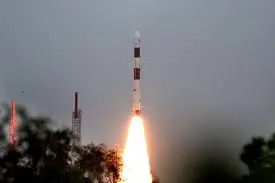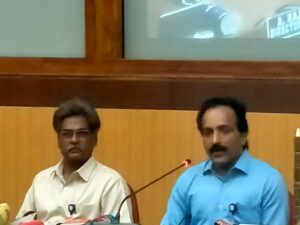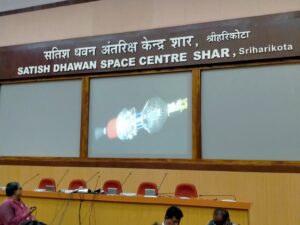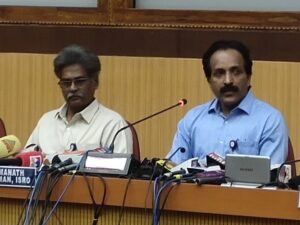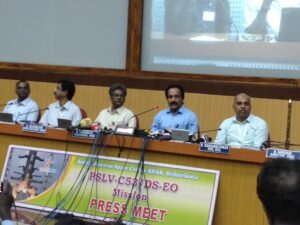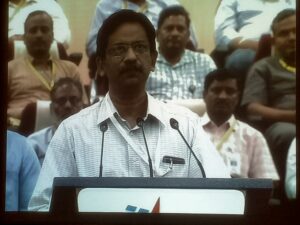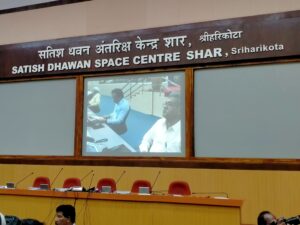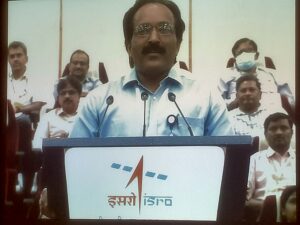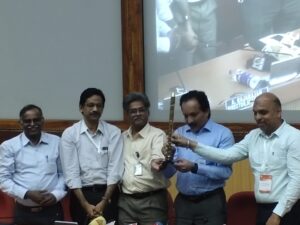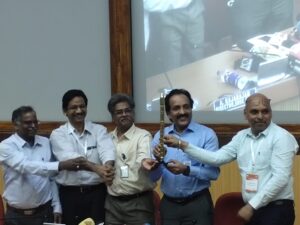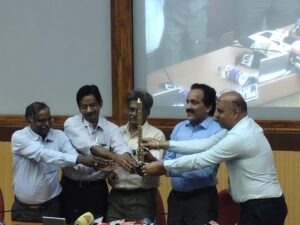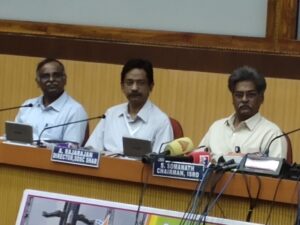ISRO PSLV-C53 carries three satellites. DS-EO, a 365 kg and NeuSAR, a 155 kg satellite both belonging to Singa pore.
ISRO has announced the success of Polar Satellite Launch Vehicle (PSLV)-C53/DS-EO mission on Thursday. The launch was done at 6:00 pm IST from the Second Launch Pad at Satish Dhawan Space Centre, Sriharikota. The co untdown of 25 hours leading to the launch started at 5 pm IST on June 29, 2022.
This launch is carrying satellites from Singapore. PSLV-C53 carries three satellites. DS-EO, a 365 kg and NeuSAR, a 155 kg satellite both belonging to Singapore. The third satellite is a 2.8 kg Scoob-1 of Nanyang Technological U niversity (NTU), Singapore.
ISRO PSLV-C53 carries three satellites. DS-EO, a 365 kg and NeuSAR, a 155 kg satellite both belonging to Sing apore.
The third satellite is a 2.8 kg Scoob-1 of Nanyang Technological University (NTU),
Singapore.
SCOOB-I satellite is the first satellite in the Student Satellite Series (S3-I), a hands-on student training program from the Satellite Research Centre (SaRC) at Singapore’s NTU School of Electrical and Electronic Engineering.
DS-EO carries an Electro-Optic, multi-spectral payload that will provide full color images for land classification, and serving Humanitarian Assistance and Disaster Relief needs. NeuSAR is Singapore’s first small commercial satellite carrying a SAR payload, which is capable of providing images in day and night and under all weather co nditions. SCOOB-I satellite is the first satellite in the Student Satellite Series (S3-I), a hands-on student train ing program from the Satellite Research Centre (SaRC) at Singapore’s NTU School of Electrical and Electronic Engineering.
The PSLV-C53 is the second dedicated commercial mission of NewSpace India Limited (NSIL). It is designed to or bit DS-EO satellite along with two other co-passenger satellites from Singapore. This is the 55th mission of PS LV and 15th mission using the PSLV-Core Alone variant. It is the 16th PSLV launch from the second launch pad. The mission proposes to demonstrate the utilisation of the spent upper stage of the launch vehicle as a stabilised pl atform for scientific payloads subsequent to the separation of the satellites.
“A four stage, 44.4 m tall PSLV-C53 has a lift-off mass of 228.433 t. It would inject DS-EO satellite into an orbit with semi-major axis of 6948.137 + 20 km, at an altitude of 570 km measured from the equator, with a low in clination of 10 deg. + 0.20,” said ISRO in a statement.
The PSLV Orbital Experimental Module (POEM) activity is performs in-orbit scientific experiments using the sp ent PS4 stage as an orbital platform. It is first time that PS4 stage would orbit the earth as a stabilized platform. Attitude stabilization is achieved using a dedicated NGC system. POEM derives the power from the solar panels mounted around the PS4 tank and a Li Ion battery. It navigates using four sun sensors, a magnetometer, gyros & NavIC. It carries dedicated control thrusters using Helium gas storage. It is enabled with telecommand feature. POEM carries six payloads including two from Indian Space Start-ups M/s Digantara and M/s Dhruva Space, en abled though IN-SPACe and NSIL.
